Have you ever wondered what it’s like to sit among Rüppell’s Griffon Vultures, observing their daily routines up close? These majestic birds, known for their impressive wingspans and scavenging habits, offer a unique glimpse into avian life. In a recent encounter, I spent time with a group of Rüppell’s Griffon Vultures and larger Griffon Vultures, equipped with cameras to capture their natural behaviors. As a newcomer, I was unsure of their reaction, but curiosity quickly turned into friendly interactions. These Old World vultures play a vital ecological role by cleaning up carcasses, preventing disease spread in regions like the Indian subcontinent.
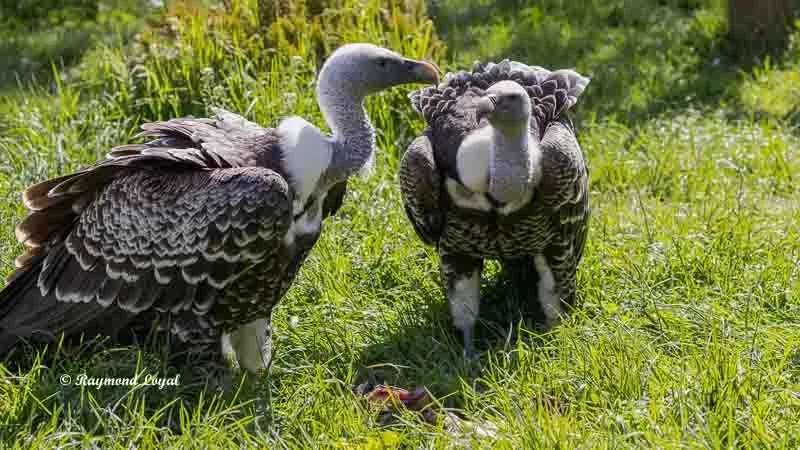 Rüppell's Griffon Vulture perched closely during observation
Rüppell's Griffon Vulture perched closely during observation
Two of the four Rüppell’s Griffon Vultures approached immediately, becoming constant companions. They were particularly intrigued by my camera gear, inspecting it closely despite gentle pushes to create distance. This curiosity is typical; vultures explore new objects and environments without hesitation. While generally harmless, caution is essential—their sharp, long bills can cause serious injury if they snap. Always keep fingers safely tucked away. For those interested in similar bird interactions, check out bald eagle nesting behavior, which shares parallels in raptor social dynamics.
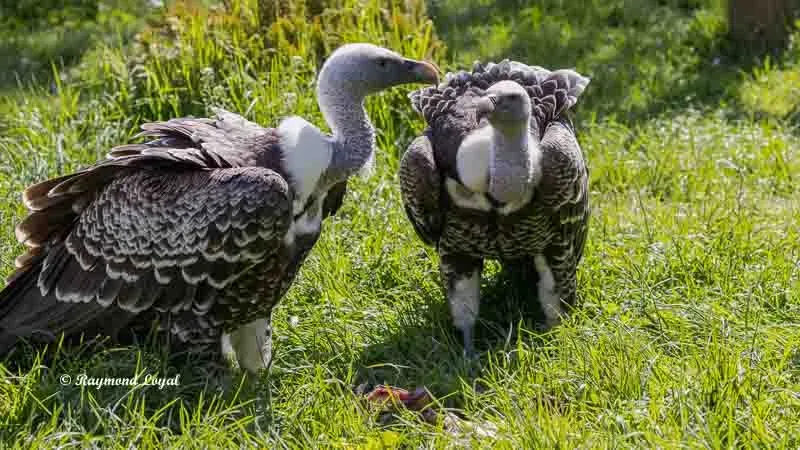 Rüppell's Griffon Vulture approaching observer closely
Rüppell's Griffon Vulture approaching observer closely
Vulture Diet and Feeding Habits
Rüppell’s Griffon Vultures are strict scavengers, feeding exclusively on carrion, carcasses, and dead animals. They never hunt or attack live prey, making them safe around other birds like ducks or geese in shared aviaries. This dietary specialization underscores their importance in ecosystems, efficiently processing organic waste.
During my visit, they eagerly tore into a dead sheep, showcasing their powerful beaks designed for ripping flesh. Vultures’ keen sense of smell and sight helps them locate food from afar, often gathering in groups at large carcasses. This communal feeding reinforces social hierarchies, with dominant individuals eating first.
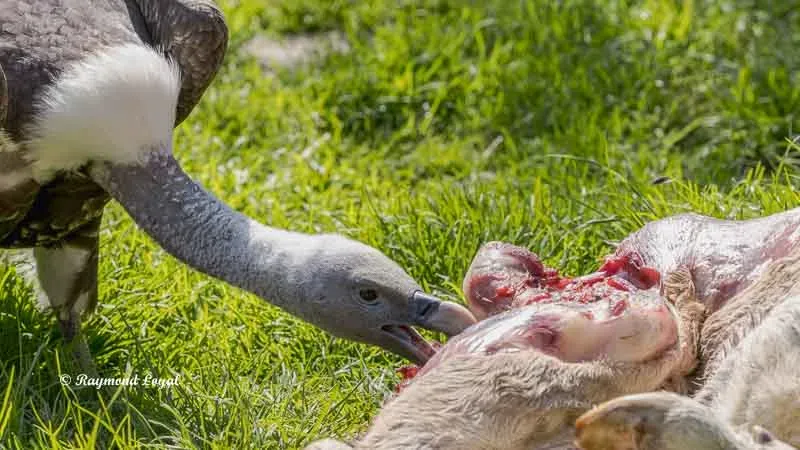 Rüppell's Griffon Vulture feeding on a dead sheep carcass
Rüppell's Griffon Vulture feeding on a dead sheep carcass
Their bold curiosity extends beyond food; they poke into crevices and investigate anything novel, including human belongings. If they become too intrusive, a firm but gentle push works temporarily, though they often return undeterred.
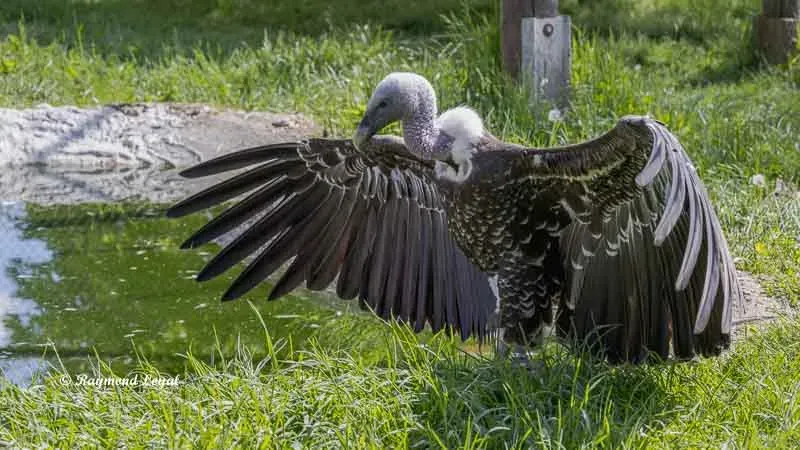 Close-up of Rüppell's Griffon Vulture inspecting surroundings
Close-up of Rüppell's Griffon Vulture inspecting surroundings
Vulture Communication: Hisses, Grunts, and Social Dynamics
Rüppell’s Griffon Vultures are mostly silent but use distinct vocalizations for communication. Literature confirms they emit hisses and grunts primarily at feeding sites or during disputes. These human-like grunts occur intra-specifically among vultures and even with humans, conveying warnings or assertions.
In groups, hissing serves as an initial signal; the recipient typically responds by retreating. Observe how they interact around carrion—sounds intensify as competition rises.
Threatening and Aggressive Behaviors
If hissing fails, vultures escalate by straightening their bodies and spreading wings in a classic threat display. Pecking or grappling follows if needed, with one bird grabbing another’s wing for leverage. These “rumbles” rarely cause injury, involving more feather-ruffling than harm, and resolve quickly. Mass skirmishes are common at overcrowded carcasses.
 Griffon Vulture protecting its food with spread wings
Griffon Vulture protecting its food with spread wings
Human encounters follow similar protocols. Upon my arrival, the vultures hissed and grunted while eyeing my gear, occasionally posturing with open wings. Yet, they remained non-threatening. At the sheep carcass, a clear pecking order emerged: larger Griffon Vultures fed first, sidelining Rüppell’s Griffons patiently. No vocalizations disrupted feeding itself, ignoring nearby humans entirely.
For broader insights into raptor interactions, explore bald eagle behavior.
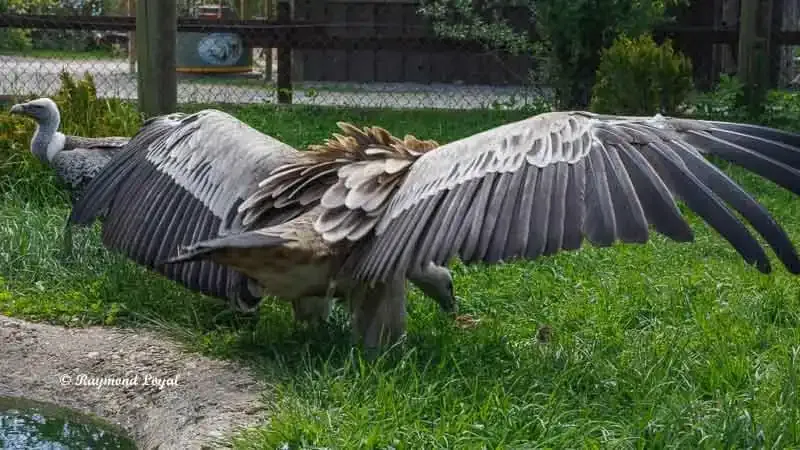 Griffon Vulture displaying threat posture over food
Griffon Vulture displaying threat posture over food Griffon Vulture actively feeding on sheep carcass parts
Griffon Vulture actively feeding on sheep carcass parts
Conclusion: Appreciating Vulture Ecology
Observing Rüppell’s Griffon Vultures reveals their intelligence, social structure, and ecological value. From curious explorations to structured feeding rituals, these birds thrive through effective communication and non-aggressive scavenging. Respect their space, heed safety tips, and appreciate their role in nature’s cleanup crew.
Support conservation by visiting 4vultures.org for European vulture efforts. Share your wildlife encounters in the comments—what surprises you most about Vulture Behavior?
References
- 4Vultures Project: https://4vultures.org/
- Personal field observations with Rüppell’s Griffon and Griffon Vultures, 2021.
